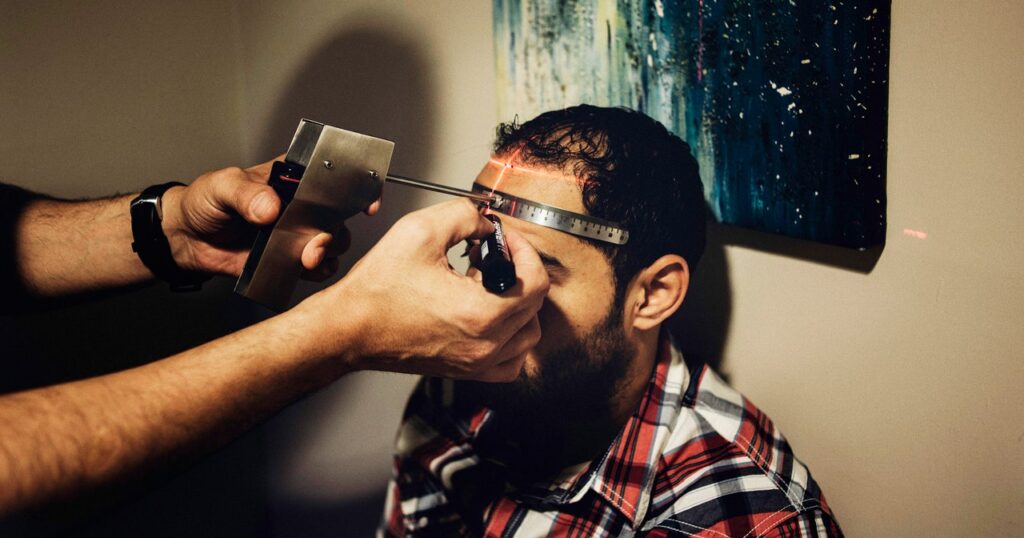Hair transplants are a billion-dollar industry in Turkey, with around 350 clinics in Istanbul alone and around 5,000 people travelling to the country every month to get more luxurious hair.
It’s a strange world, one that photographer Emanuele Satori makes clear in his fascinating series “Turkish Hair Farms.” He visits operating theatres, where bright lights shine on scalps prepared for surgery, and the streets, where patients play tourists with their families after their operations. “It’s quite normal to see bandaged men visiting museums, walking the streets or eating in restaurants,” says Satori. “They’re either alone, with their wives and children or with other friends, all having surgery. It’s very strange and interesting at the same time.”
In Turkey, the procedure, called follicular unit extraction, costs between $1,700 and $2,000, a bargain compared to the $15,000 to $25,000 you would pay in the U.S. The procedure is relatively simple, with surgeons harvesting around 4,000 hair follicles from the hair-dense back of the head and inserting them elsewhere in the scalp through small incisions.
Satoli learned about the operation during a visit to Istanbul earlier this year. He often saw men with gauze wrapped around their heads and wondered what on earth they were doing. A friend told him they were simply buying the hair cheaply. He explained that clinics in Turkey have very low overhead costs, including rent and salaries, so they can offer the operation cheaply. Thousands of patients visit each month, many of them from the Gulf region.
“When I found out that Turkey is the number one hair transplant country in the world and that most of the patients are from Arab countries, I wanted to dig deeper and meet these people to understand why so many people are really concerned about their appearance, especially their baldness,” Satori said.
The photographer met with several doctors. Most of them saw his project as a way to promote their work, and some even asked their patients if they could be photographed. Of course, many said no. “It’s not easy to tell people, especially people you know, that you’re not happy with the way you look and that you want to change it surgically,” he says.
Satorri photographed four clinics earlier this summer, using a Nikon D800 camera with a 35mm lens, switching to a 24mm for wider shots. His images are surprisingly intimate, capturing men waiting to be seen by a doctor, men having their hair washed by a nurse, men lying on operating tables under anesthesia, and many men just taking the opportunity to see the city, like Satorri’s friends who joined him on a night ferry tour of the Bosphorus.
In most cases, the surgery seems to be effective, with many men returning for a second, third, or even fourth treatment if the bald area is too large to cover all at once.


